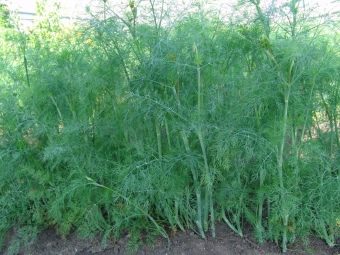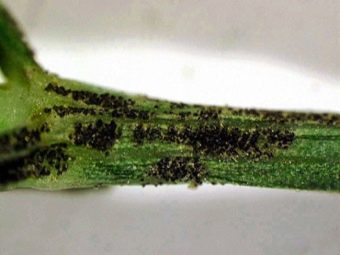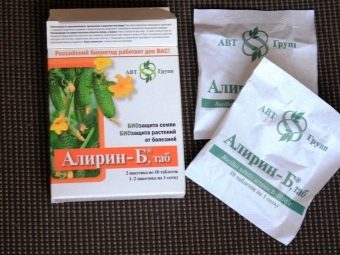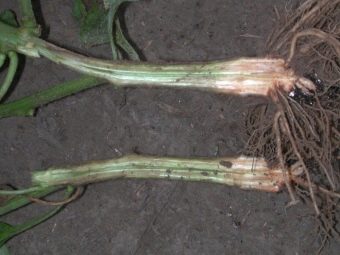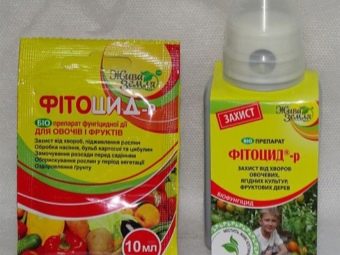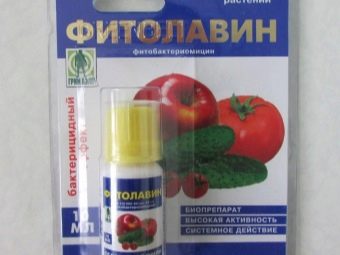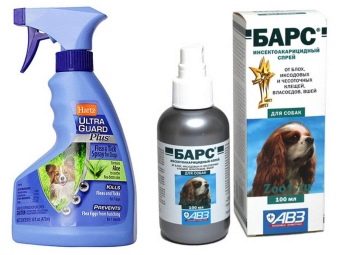Dill: diseases and pests, how to deal with them
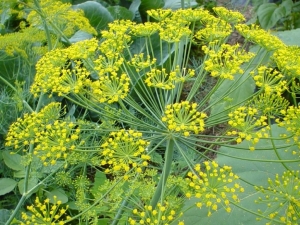
A fragrant and incredibly useful dill is a frequent guest on the tables of our compatriots.Practically every gardener considers it obligatory to sow this popular greens so that during the summer to have the opportunity to enjoy a storehouse of vitamins and beneficial trace elements. They are often disappointed by the fact that instead of a fragrant and green plant, as a result, farmers get an unsightly result. For all its simplicity in growing dill, there are fairly common diseases and pests that can complicate this process and negate all the efforts. It is worth more to consider ways to deal with them, which will help to get a wonderful harvest.
Symptoms
Often in the country or home garden unpretentious dill becomes capricious. He does not ascend, grows poorly and is ill. Healthy shoots should be juicy, saturated green color. If they change color, turn black, start to wither or dry - they were struck down by illness or attacked by pests. Carefully observing the plant, the farmer will be able to determine the initial stage of infection and try to save the crop. Having understood the small nuances, there is a chance to correctly identify the source of troubles.
Diseases and treatments
There are many diseases that affect the umbrella family. Proper and timely methods of dealing with them - this is the key to a good harvest.
Perinosporosis
Peronospora (Peronospora parasitica) is very dangerous with rapid development, to which the farmer does not always have time to react. Perinosporosis can destroy a healthy plant within a few days. Frequent precipitation and temperature changes are a favorable factor for this disease. The root cause of the disease is the abundance of weeds and the remnant of the old crop in the soil. The main hawkers of the spores of a pathogenic fungus are the aphid and whitefly. And also there is a risk to face the infected landing material.
In the initial stage, yellowish spots appear on the outer part of the foliage, which after a while begin to acquire a brown tint. The inner part is covered with white and gray bloom. The leaves wither and shrivel, as a result, the escape completely dies. For treatment, it is possible to use drugs of biological origin - Fitosporin-M, Planriz, Bayleton, Baikal-EM at intervals of 2 weeks. If the situation is critical, then heavy chemicals are used to save the harvest - Acrobat MC, Oxyhom, Ridomil Gold. After their use dill can not be eaten for a month. Popular methods of struggle in this case will be useless, even at the very beginning.
Fomoz
Fomaz (Phoma anethi Sacc) is a fungus that progresses on an infected shrub for only 2 weeks. Because of this, the infection can be repeated several times per season. Phomosis affects both young shoots and rooted mature plants, which also become a source of infection. A lack of boron in the soil, high humidity and high heat are excellent conditions for the development of the disease. Malicious disputes are spread by insects, wind and water. The fungus is able to preserve its vital activity on weeds, dead remains and fallen leaves.
The main sign of fomoz is dark-brown oblong spots with black patches and black border. The lower leaves may turn pink, and the roots are covered by a pressed erosion of a brown color. Sick bushes cannot be treated with chemicals, so they should be destroyed, and then the ground should be disinfected. The remaining beds must be regularly treated Bordeaux mixture. Prevention is the main method of protection against fomoz. With a solution of "Rovral", "Tirama" or "Fundazola" it is worth treating the soil before sowing. Soil enrichment with potassium and phosphorus, foliar application of boron-containing preparations during the growing season will all strengthen the immunity of plants.
Mealy dew
Mealy dew (Erysiphe umbelliferarum) is a very common disease that affects not only the umbrella family.It can develop both in open ground with high humidity and low air temperature, as well as in closed due to uncultivated weeds. The main carriers are aphids, ants and insects capable of flying. Initially, a white tinge, resembling a spider web, appears on the leaves. Over time, it becomes dense and spreads to the stem. Shoots become dry, lose their juice and spicy flavor. Dill can be eaten, but the taste characteristics will be different from the usual.
At the initial stage, mildew is treated with folk remedies. After removing dried parts, dill is sprayed with diluted mustard powder and tincture of garlic and onion arrows containing natural antiseptic - phytoncides. And can also help processing foam household, tar and green potash soap. Fine spraying with diluted whey (1: 10) with iodine (1 drop per liter) also gives excellent results, since the fungus dies in an acidic environment. At the advanced stage they are sprayed with fungicides - drugs containing copper. Some of them (“Strobe”, “Gamair”, “Mikosan”, “Alirin-B”) are safe for human health and the environment, as they are of biological origin. Heavier products are Bordeaux blend and copper sulfate. Antibiotics are often used, for example, Terramycin.
Verticillary wilting
Verticillium wilt (Verticillium arbo-atrum) is characterized by a long incubation period. The causative agent of the disease that develops in the soil may not express itself within 2-3 years. For this fungus, a favorable environment is high temperature in a complex with low air humidity. Causes of verticillia can be covered in poorly rotten compost and manure. From soil fungal spores fall on the damaged roots, infecting the plant.
Mycelium of a mushroom gets into vessels, corking them. At the same time, tissue poisoning by secreted toxins occurs. The ground part of the shoots no longer absorb nutrients and moisture. Abundant watering situation will not fix. Over time, the bushes shrink and cease to grow.
When the weather is sunny, the dill begins to turn yellow, acquiring an unnatural shade of red over time. In the last phase, it becomes brown, with twisted and sluggish foliage. To date, verticillus treatment can not be. During the active growing season, it is important to do prophylactic treatment with biofungicides (“Fitotsid-R”, “Fitodoktor”, “Fitosporin-M”). And when planting it will be useful to add granules "Gliocladin", "Trichodermin", "Entobacterin."
Blackleg
Young greens in greenhouses and greenhouses are prone to a fungal infection like black skin (Syngenta). The black leg progresses rapidly in conditions of poor ventilation, extreme temperature changes, excessive moisture and insufficient soil loosening. The source of infection is diseased seeds. This disease can destroy a significant percentage of the crop during germination. The stem becomes thinner at the base, darkens and dries.
The bush falls to the ground under the weight of its weight. Having noticed the first signs of infection, it is necessary to start watering with a weak solution of potassium permanganate. Watering itself should be drastically reduced. One of the well-established folk methods - tincture of onion peel, wood ash and 3% ethyl alcohol. The drugs that help in this case are Baktofit, Planriz, Fitosporin-M.
Fusarium
Fusarium (Fusarium) is a dangerous infection for many cultures. The pathogenic fungus infuses tissues with toxic toxins, making them unsuitable for food. After a one-month incubation period, a rapid failure occurs. The plant can die completely in a few days. The fungus develops in conditions of heat and high humidity, likes light acidified soil. Spores are spread by insects that feed on plant sap, for example, whitefly, aphids and spider mites.Soil oversaturated with chlorine is also a favorable factor for development.
Most often, the symptoms become noticeable at the advanced stage of the process. Distribution starts from the bottom. The leaves change color, and on stem sections clearly show the characteristic dark spots, which indicate that the vessels are blocked by the fungal mycelium. Folk remedies to combat fusarium help only for preventive purposes. Shrubs with visible damage are removed and burned. The rest are treated with biofungicides ("Fitolavin", "Agat-25K", "Vectra", "Vitaros"). As the heavy artillery used "Oxy", "Bravo", "Raek", "Diskor".
How to deal with pests?
In addition to the fact that insects are the main carriers of spores of pathogenic fungi, they themselves are able to deliver a lot of problems to the farmer. The high concentration of essential oils contained in spiced dill scares most pests, but, unfortunately, not all. In the fight against them, in addition to processing the combined drugs, a significant role is played by folk remedies.
Dill moth
Insect lays eggs in the ground and on the plant itself. Hatching caterpillar feeds on seeds. She eats, and then braids the buds. For prevention, it is worth removing ripe umbrellas. Wild umbrella can be a hotbed of infection, so you should clean the whole garden from them. You can plant sage, wormwood, rosemary, marigold or calendula nearby. They have a strong odor that scares the mole. Infusions prepared from them, it is recommended to regularly spray dill beds.
Carrot listobloshka
The larvae of the pest feed on the plant sap, contributing to its fast wilt. The insect hibernates on coniferous trees, so the landing site should be carefully chosen. In order to scare away leaflets, dill beds are treated with tinctures of citrus peels and diluted mustard powder. Onions and mustard, growing close, also scare insects. The soil is sprinkled with a mixture of ground pepper, tobacco leaves and wood ash in an equal ratio.
Striped shield
This is a bright and noticeable bug that feeds on the juice of immature seeds. It is assembled by hand, easily crushed into a container with water. It can be locally sprayed with fleas. Total spraying of crops, as a rule, is not required.
Aphid
This parasite, settling in colonies, eats the tops of young fennel and leaves. Sucking the juice from the shoots, it makes them lifeless, which leads to the deformation and drying of the plant. After leaving a sticky plaque that interferes with the natural process of photosynthesis. Aphids live with ants, so they will have to fight them in a complex way. Aphids are afraid of sharp flavors. As protection, you can plant a number of plants that emit suitable odors (mint, coriander, basil or fennel). Tinctures from these cultures can destroy colonies that have already appeared. Spray will have several times a day.
Prevention
It is much easier to prevent a problem than to deal with it afterwards.
Adhering to the following simple techniques, you can avoid the death of the crop:
- carefully selected and disinfected planting material should be used, so before planting the seeds of dill are soaked in a solution of potassium permanganate (1 gram per 100 ml of warm boiled water);
- choose solar and ventilated areas for planting;
- the annual change of dill planting site - correct crop rotation is important, it is better not to plant the plant after beets and carrots, and the nightshade, pumpkin and legumes are excellent predecessors for the crop;
- light and loose soil;
- uniform, uncompressed sowing of seeds - bushes that grow too close become weak and prone to attacks of fungi;
- timely removal of weeds - weed grass must be removed not only from the beds, but also around; after removal, it is desirable to burn it, because mushroom spores are very tenacious;
- regular fertilization of the soil, depending on its composition.
By applying these simple methods in practice, the farmer will be able to get a great harvest without resorting to the use of harsh chemicals.
For information on how to protect dill from aphids, see the video below.

